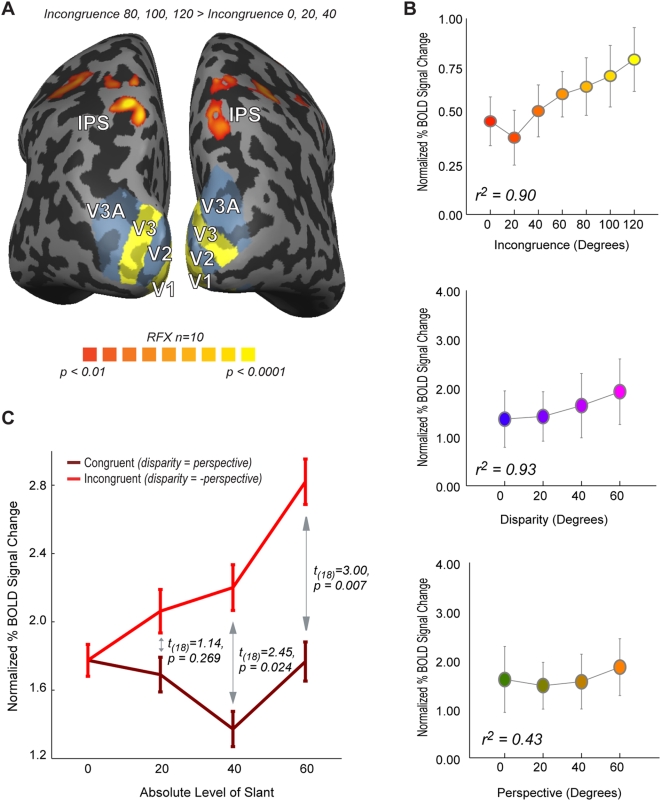Figure 5. Imaging Results (A).
Results of random-effects GLM analysis, contrasting the three highest levels of incongruence (80°,100° and 120°) against the three lowest levels of incongruence (0°, 20° and 40°). Bilateral activation for this contrast was found along the anterior part of the intraparietal sulcus. (B) Changes in percentage BOLD signal as a function incongruence (top), disparity-defined slant (middle) and perspective-defined slant (bottom). (C) Comparison of the difference in evoked activation between stimuli containing equal (no incongruence) and opposite (incongruence) levels of disparity and perspective-defined slants. Increasing the level of disparity- and perspective-defined slants did not significantly increase the activation when these slants were kept identical (e.g. perspective-defined slant: 60°, disparity-defined slant: 60°, dark red line). If slant levels are increased in opposite directions, then this increase in incongruence is associated with increased cortical activation. Taken together, these data demonstrate that activation that the activation cluster within IPS reflects incongruence, independent of disparity- and perspective-defined slant. Error bars denote SEM.

